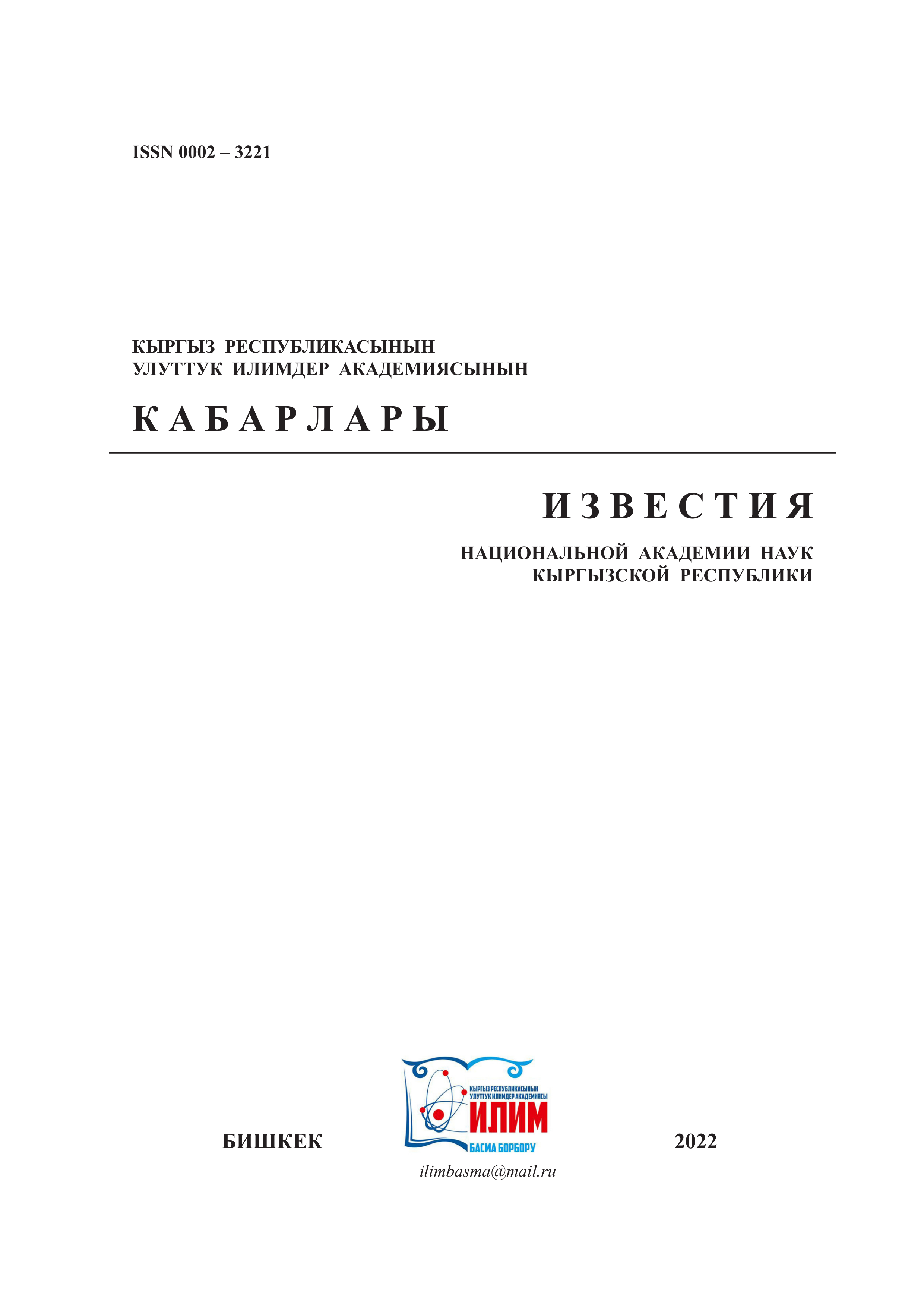STATE OF LEUKOGRAM AND CELLULAR IMMUNE IN FIRST-YEAR STUDENTS STUDYING IN UNIVERSITIES OF VARIOUS REGIONS OF KYRGYZSTAN
Keywords:
students, cellular immunity, leukocytes, leukocyte formula, differentiation CD-clusters, low mountains, high mountains.Abstract
In 135 students permanently residing in low and high mountains, the physiological status of the immune system was studied depending on the area of residence before moving due to study, and at the end of the first year of study. The content of leukocytes, lymphocytes with CD4+, CD3+, CD56+, CD16+, CD19+ receptors in the peripheral blood was determined on a Beckman Coulter flow cytometer (USA), and the leukogram (leukocyte formula) was examined.It was shown that in students of both groups the content of leukocytes and lymphocytes in the peripheral blood is within the reference values, but in the representatives of the highlands it is at the upper limit of the physiological norm, and among the lowlanders it is at the lower limit.At the same time, there is a deficiency in the content of T- and B-lymphocytes in those living in low mountains, and in representatives of high mountains there are changes in the population of ECs and helpers, which are compensated by the end of the first year of study. In the leukocyte formula, 18% of the Highlanders have a slight monocytosis, and 25% of the Lowlanders have eosinophilia, which is minimized by the end of the first course. According to the changes in indicators, it can be stated that deviations from the generally accepted limits of fluctuations in immunological parameters affect the effectiveness of students' immune protection, and living in high mountains from the moment of birth contributes to the formation of a higher level of immune health.
References
Агаджанян Н.А., Двоеносов В.Г., Ермакова Н.В., Морозова Г.В., Юсупов Р.А. Двигательная активность и здоровье // Казань: КГУ. – 2005. – 216 с.
Галочкина, Д. А. Исследование взаимосвязи здорового образа жизни и жизнестойкости современных студентов (на примере студентов департамента психологии): магистерская диссертация//УРФУ. – Екатеринбург. – 2020. – 98 с.
Кеберле С.П. Оценка состояния здоровья студентов в современных условиях обучения//Международный студенческий научный вестник. – 2019. – No1.URL:https://eduherald.ru/ru/article/view?id=19531
Кононец И.Е., Цопова И.А. Параметры гипофизарно-тиреоидных гормонов и обмена железа у студентов первых курсов вузов различных регионов Кыргызстана//Universum:Медицина и фармакология.-2016.-No5(27).URL: http://7universum.com/ru/med/archive/item/3197
Кононец И.Е., Цопова И.А. Показатели красной крови у студентов-первокурсников различных регионов Кыргызстана //Вестник КРСУ. 2021. – No5. – С. 131–136.https://www.elibrary.ru/item.asp?id=46182274
Плитман Н.В. Иммунологическая резистентность студентов в условиях привычной и повышенной двигательной активности // Вестник ЮУрГУ. – 2011. – No 7. – С. 118–122.
Татьяненко А.А., Татьяненко С.А. Здоровье студентов в период дистанционного обучения// Международный журнал экспериментального образования. – 2021. – No2. – С.26–30.URL: https://expeducation.ru/ru/article/view?id=12021
Шашкова Е.Ю., Щёголева О.Е., Айвазова М.С. и др. Иммунологическая реактивность у студентов Поморского государственного университета имени М.В. Ломоносова города Архангельска//Материалы XII
Всероссийской медико-биологической науч. конф. молодых исследователей «Фундаментальная наука и кли-
ническая медицина». СПб. – 2009. – С. 428.
Щёголева Л. С., Сергеева Т. Б., Шашкова Е. Ю. Особенность иммунологической активности периферической крови у лиц разных возрастных групп приполярного региона // Экология человека. -2016.-С.15-20.
IrwinM. R. ColeS. W., Reciprocal regulation of the neural andinnate immune systems // Nat. Rev. Immunol. – 2011. – Vol. 1(9). – P. 625–632.

